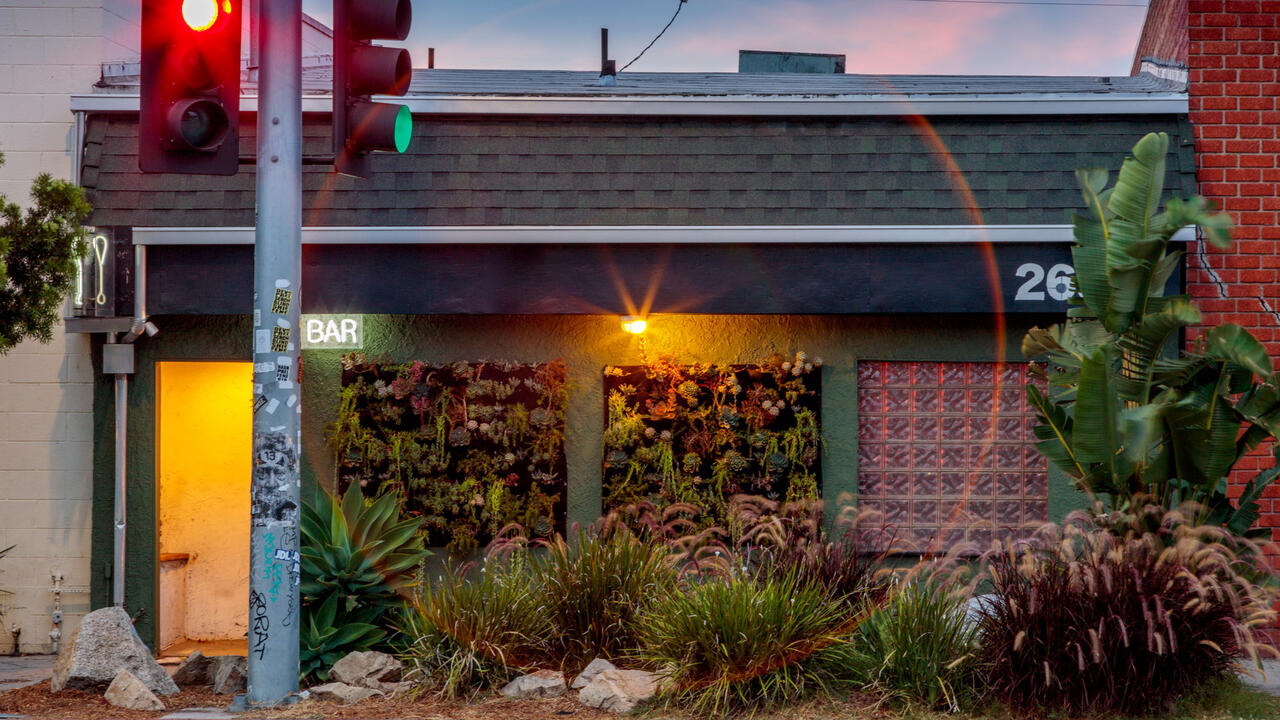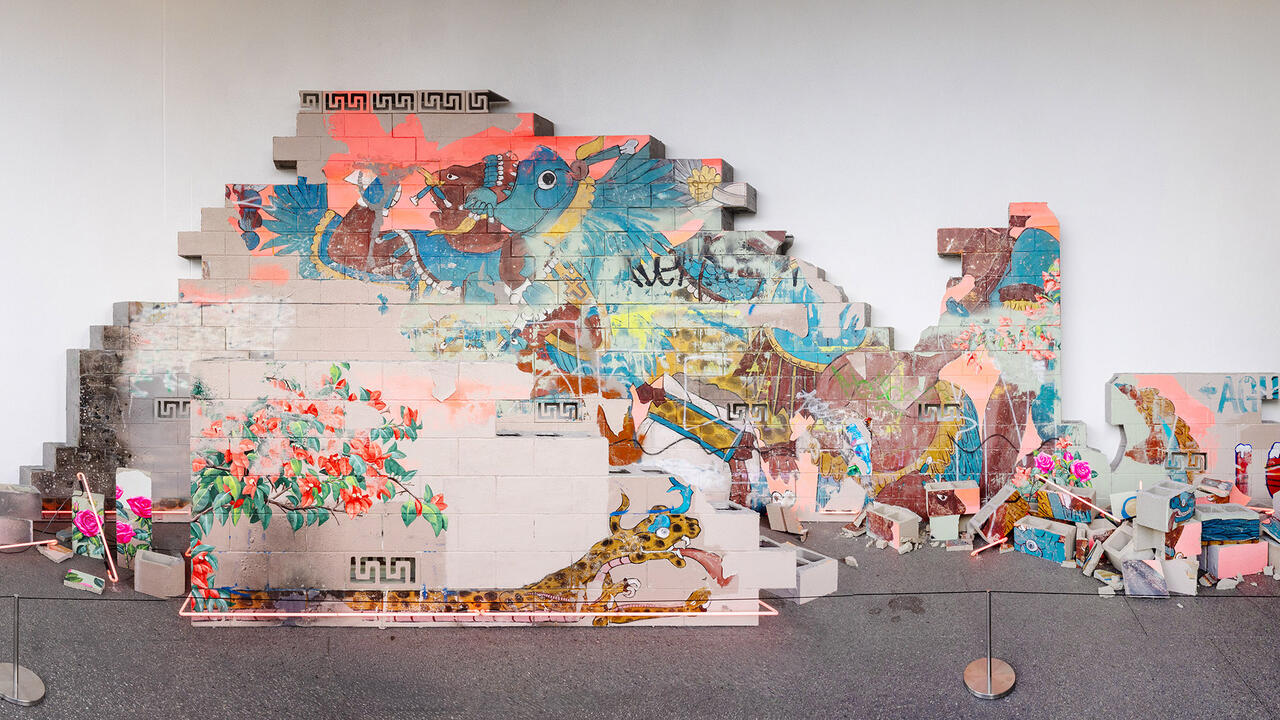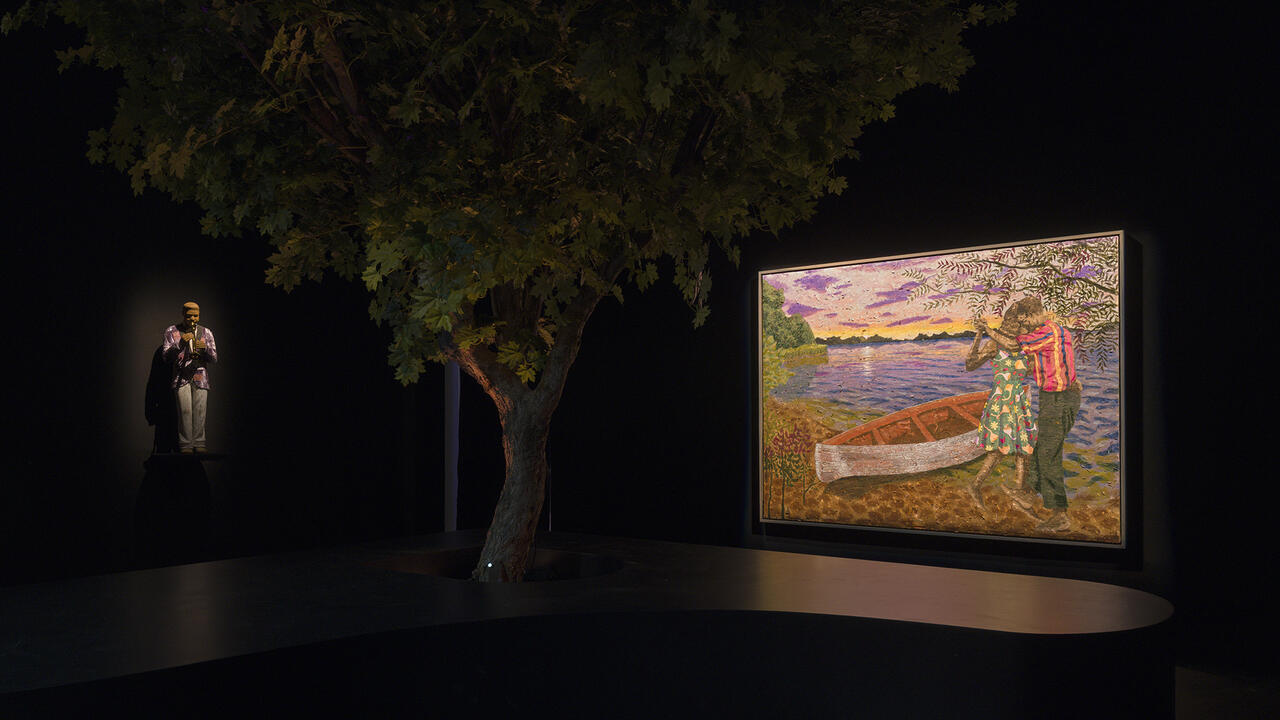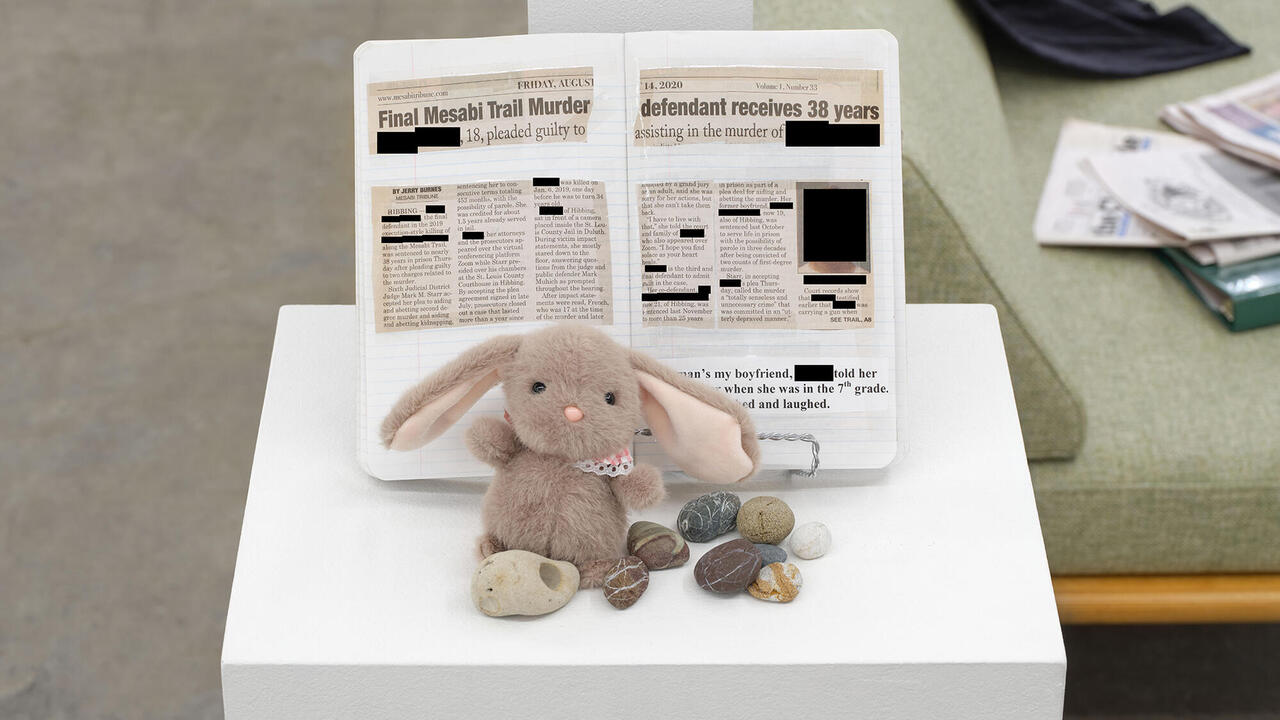From Monumental to Microscopic, These Works Changed the History of Art in Japan
Two parallel exhibitions in LA, at Blum & Poe and Nonaka-Hill gallery, show how Japanese artists of the 1980s and ‘90s confronted Postmodernism
Two parallel exhibitions in LA, at Blum & Poe and Nonaka-Hill gallery, show how Japanese artists of the 1980s and ‘90s confronted Postmodernism

Curated by Mika Yoshitake, ‘Parergon: Japanese Art of the 1980s and 1990s’ forms a corollary to her 2012 Blum & Poe exhibition ‘Requiem for the Sun: The Art of Mono-ha’, which presented a much-needed introduction to a group of postwar Japanese artists whose works have now been aligned with more recognizable Western European movements such as Arte Povera, Minimalism and Land Art. In a similar fashion, the current exhibition presents a significant two-part survey with Nonaka-Hill Gallery that features over 25 artists whose formal and conceptual strategies will not feel wholly unfamiliar to audiences versed in contemporaneous American and European artistic practices. The exhibition also includes a robust program of musical performances, artist talks, and roundtables.
The curatorial aim is two-fold: to select a cross-section of Japanese art that bridges the years between the Mono-ha movement and the current period of ‘Neo-pop,’ while also carving out a unique position for these works during a moment when cultural production in the US and Europe were characterized by the onset of postmodernism. Its title, drawn from a 1981-1987 Tokyo-based gallery and an eponymous 1978 essay by Jacques Derrida, explicitly directs us to a post-structuralist framework. A ‘parergon,’ for Derrida, was a re-thinking of the ‘frame’ as something not extrinsic or ornamental to an artwork but rather essential to it. Meant to dispel certain hierarchical values derived from an artwork’s autonomy, it is employed here as a filter through which to experience works with more conceptual, multi-media, interdisciplinary and performance-based inclinations.
Tsuyoshi Ozawa’s Jizoing (1993/2019), for instance, incorporates both sculpture and photography with nuanced shades of irony. A wall label invites you to scale a monumental pile of flowery pillows to view a series of melancholic photographs documenting sculptures of the Jizo, a Buddhist divinity known for protecting children, posed quietly at contentious historical and political sites – an activity that becomes precarious as you near the apex. Like traveling gnomes, the disproportionate cuteness and well-meaning spiritual sentiment of the Jizo wittingly distracts from the underlying historical weight of sites where Ozawa has photographed them.

Elsewhere, Noboru Tsubaki’s enormous, cadmium-yellow sculpture Fresh Gasoline (1989) evokes both sci-fi fantasy and monochrome horror. Covered in a patchwork of reptilian scales and topped with quill-like twigs, the bloated organ of flora and fauna appears to be slowly propelling itself forward. If the title points us to the ecological genesis of crude oil, the sculpture’s sheer volume and raw surfaces appear as an unchangeable material condition. This surreal and humorous conjuring of earthly materials not only reveals an ambivalent, if not antagonistic response to the pure and objective notions of nature championed by Mono-ha, but also strangely presages the infinitely scalable forms of Superflat.
Adding an ominous acoustic layer to the entire show, the high-pitched pings and atmospheric drone of Ryoji Ikeda’s multi-sensorial video installation data.tron [WUXGA version] (2011) will reach you before you reach it. Depicting information mined from sources as varied as medical records and aerial maps, Ikeda presents this data as minimalist composition. Binary codes and computer graphics flicker on screen in scrolling, floating and bursting patterns of light. Here, the otherwise immaterial language of our digital age is given sonic texture and visceral frequencies.

Nonaka-Hill’s presentation offers a more modest collection of works, including the exhibition’s most stunning photography. Displayed in a grid, Naoya Hatakeyama’s eight colour photographs –from his 1999 ‘Underground/Water’ series – depict organic waste found in the sewers of subterranean Tokyo. Here, the unseen microcosms beneath the city are enlarged, lush and sublime: in one image, a swarm of insects resembles a constellation of stars. In another, a puddle of soiled water resembles a vast geological landscape, brimming with light and texture.
In many ways, ‘Parergon’ successfully and astutely fills in the art historical gap between Mono-ha’s austere, ‘natural’ aesthetics and the dilated, hyper-capitalist pop of Takashi Murakami and his ilk, while also situating the work in dialogue with Western art of the time. However, the curatorial themes meant to cohere the exhibition – ‘abject politics, transcending media, performativity, and satire and simulation’ – do not seem sufficiently represented in the first half of this vast survey. If a 1978 post-structuralist text was translated and adapted into Japan’s cultural landscape in the early ‘80s, where are the more garish, figurative and ornamental artistic forms associated with that decade’s neoconservative camp of postmodernism? One could certainly tease out neo-expressionist tendencies in the emotional and gestural paintings of Kazumi Nakamura, on view at Blum & Poe, but what of Japan’s less ‘tasteful’ artistic manifestations? Where are the delightfully brash, neo-baroque works of Shoko Maemoto, whose interdisciplinary practice spanned sculpture, painting and fashion, or the theatrical self-portraits of Yasumasa Morimura, with their racially and culturally evocative perspectives on that decade’s modes of appropriation? While the second half of ‘Parergon’ promises to reveal more about this rich historical moment, like any survey exhibition it also risks being incomplete. Thus, one of its most critical contributions is laying fertile ground for further investigation.
Part II of Parergon opens April 6 and runs through May 19, with a 5-part public programming series
Main Image: Tsuyoshi Ozawa, Jizoing, 1993/2019 (Futon structure),1988-1997 (Photographs), futons, c-print photographs. © Tsuyoshi Ozawa Courtesy: Blum & Poe, Los Angeles/New York/Tokyo






















